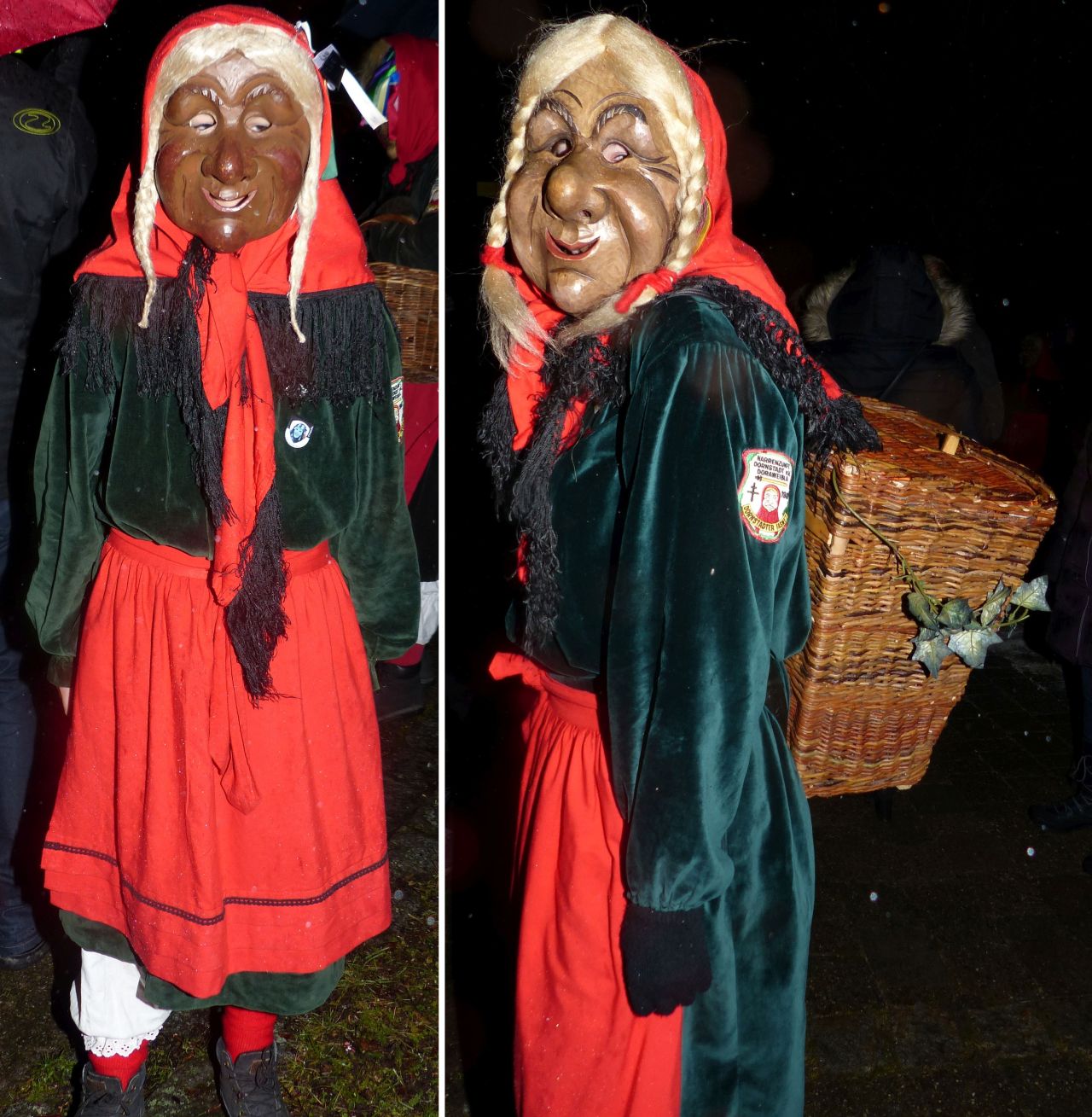Description
The Dornstadt Narrenzunft (Jesters‘ Guild) Doraweibla is a member of the
Alemannic Jesters‘ Ring. The figure of the Doraweibla goes back to the word
Dorneconstadt, mentioned in the year 1225, which means a thorny, barren place
with many sloe bushes – the plateau of the Ulm Jura, and the Swabian word for
woman.
The Hästräger (those wearing a carnival costume) of the Swabian-Alemannic Jesters‘ Guilds are always figures based on tales and sagas.
The Doraweibla is dressed in a velvet green skirt and a matching blouse,
red apron and red woollen stockings. The ash-blond hair made of flax is covered
by red headscarf with black fringe. The Doraweibla’s face is hidden by a
hand-made wooden mask. In her hand or on her back is a wicker basket.
We support the Guild of the Doraweibla as passive members.
Intention
Many people like rituals, we too. People of all ages take part in these guilds, from small children in hey wagons, till the grandparents, who can no longer take part in all the events. The masks and the costumes are inherited in the family. Who was in a carnival guild as a child and took part in the many parades will stay with it as teenager and adult. At the time of the Carnival, the Hästräger always return to the place of their guild, whether in costume or as an audience. Shared experiences and rituals weld together. The practice of rituals is important for the life in the village. Jointly experienced rituals create a sense of togetherness, belonging, a joint identity. The tradition of the Narrenzünfte (Jesters’ Guilds) should be cultivated and passed on.
Beschreibung
Die Dornstadt-Narrenzunft Doraweibla ist Mitglied des Alemannic Jesters’ Ring. Die Figur der Doraweibla geht auf das Wort Dorneconstadt zurück, das im Jahr 1225 erwähnt wurde und einen dornigen, kargen Ort mit vielen Schlehenbüschen bedeutet – das Plateau des Ulmer Jura und das schwäbische Wort für Frau.
Die Häuptlinge der schwäbisch-alemannischen Narrengilden sind immer Figuren, die auf Geschichten und Sagen basieren.
Das Doraweibla trägt einen samtgrünen Rock und eine passende Bluse, eine rote Schürze und rote Wollstrümpfe. Das aschblonde Haar aus Flachs ist mit einem roten Kopftuch mit schwarzen Fransen bedeckt. Das Gesicht der Doraweibla wird von einer handgefertigten Holzmaske verdeckt. In ihrer Hand oder auf ihrem Rücken befindet sich ein Weidenkorb.
Wir unterstützen die Gilde der Doraweibla als passive Mitglieder.
Absicht
Viele Menschen mögen Rituale, auch wir. Menschen jedes Alters nehmen an diesen Gilden teil, von kleinen Kindern in Kleinwagen bis zu den Großeltern, die nicht mehr an allen Veranstaltungen teilnehmen können. Die Masken und Kostüme werden von der Familie geerbt. Wer als Kind in einer Karnevalsgilde war und an den vielen Paraden teilgenommen hat, wird als Teenager und Erwachsener dabei bleiben. Zur Zeit des Karnevals kehren die Häuptlinge immer an den Ort ihrer Gilde zurück, ob in Tracht oder als Publikum. Gemeinsame Erfahrungen und Rituale schweißen zusammen. Das Üben von Ritualen ist wichtig für das Leben im Dorf. Gemeinsam erlebte Rituale schaffen ein Gefühl von Zusammengehörigkeit, Zugehörigkeit und gemeinsamer Identität. Die Tradition der Narrenzünfte sollte gepflegt und weitergegeben werden.


